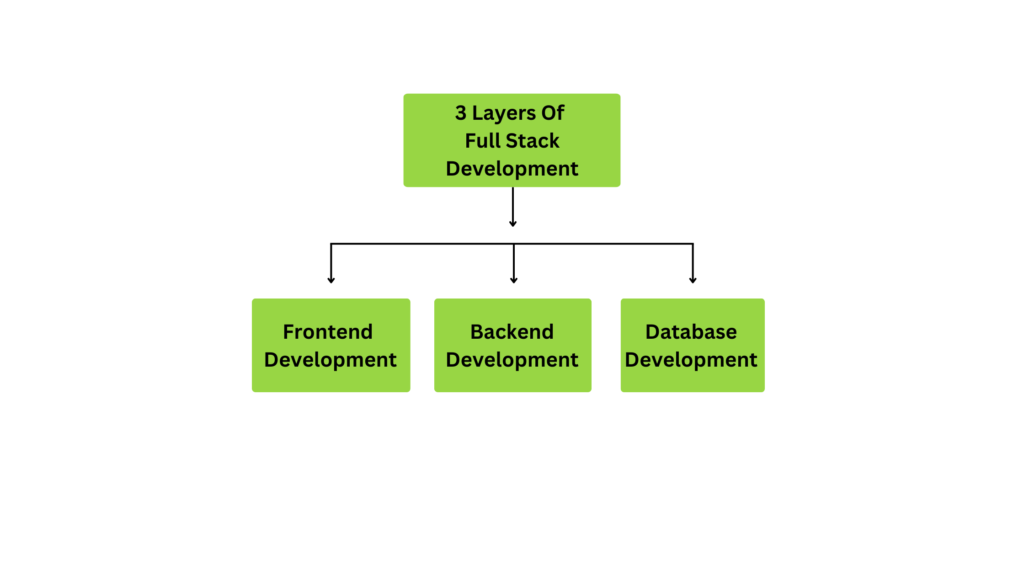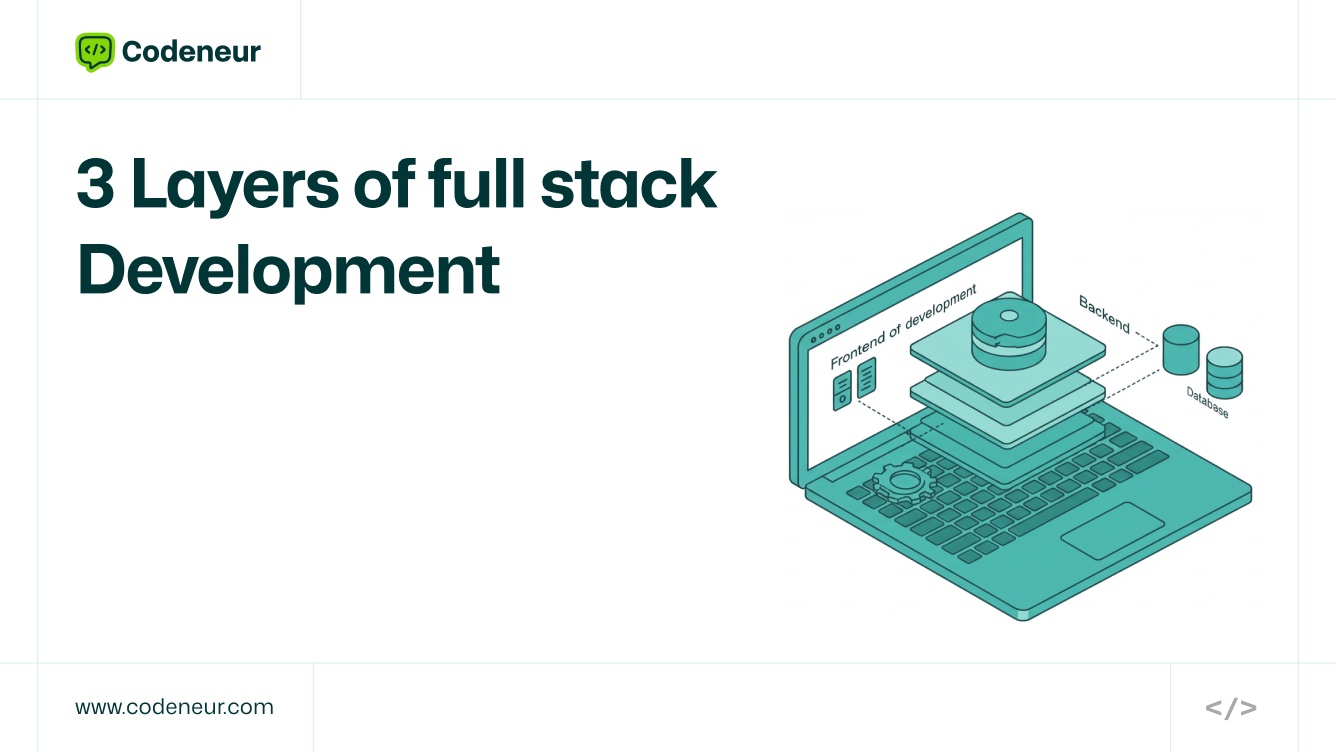Mastering three layers of full stack in detail will be important to anyone who tries to plunge into this field. Besides the fact that mastering these areas will make you a versatile developer, it will also increase your marketability and salary potential manyfold.
What are the 3 Layers of the Full Stack Development?
Before we get into the layers of full-stack development, let’s know what being a full-stack developer means. A full-stack developer is a person who can work on both sides of the website – the front side and the backside.
Hence, they can handle everything, from how the website looks and works for the user, which is termed as frontend, to managing the behind parts like servers and databases, which are termed as backend.
So, to put it briefly, they could build, manage, and keep running the whole web app nicely.

1. Frontend Development
Frontend development is everything with which a user interacts over a website or application. It is the visual part where design meets functionality. Key components will include:
- HTML: This provides the backbone of a web page, structuring its content.
- CSS: CSS stands for Cascading Style Sheets, and the full form is called a Stylesheet language that serves as the main reason for the look and feel of web pages.
- JavaScript: A scripting language that allows dynamic behaviors and interaction on web pages.
2. Backend Development
The backend is the server-side part of web applications. It’s supposed to take care of data processing, and business logic, and to make sure the front end receives the needed data. Key aspects include
- Web Servers: Software serving web pages to clients, including Apache or Nginx.
- Server-side languages: These include, among others, the following: Python, Ruby, PHP, Java, and Node.js.
- APIs: Application Programming Interfaces-sets of protocols that allow software components to interact with each other.
3. Database Development
The database layer is critical as far as data storage, retrieval, and management are concerned. It forms the core that will make your application capable of handling user data, content, and any other information that might be required. Key technologies include
- Relational databases: Basically, this includes SQL-based systems like MySQL, PostgreSQL, and SQLite.
- NoSQL Databases: Non-relational databases, examples are MongoDB and Firebase.
- Data Management: Tools and methods for organizing data such as ORMs.
Full Stack Frameworks: What You Need to Know?
This is to say, the Frameworks are crucial in making development a lot easier. They let you develop in an organized manner, often with code pre-written and libraries included.
Popular Frontend Frameworks
- React is a JavaScript library for building user interfaces; The most well-known library maintained by Facebook.
- Angular is a mobile and desktop web application development platform for building applications, developed by Google.
- Vue.js This is an open-source progressive and flexible JavaScript framework built for constructing user interfaces.
Most Popular Back-End Frameworks
- Express.js is a fast, unopinionated, flexible, Node.js web framework for building web applications.
- Django is a high-level Python framework that motivates rapid development.
- Ruby on Rails It’s a server-side technology, hence, it runs on the server and is used to support web applications.
By using these frameworks accordingly, you can accelerate your development to focus on functionality and not build it from scratch.
Understanding Full Stack Development Salary
A full-stack developer’s salary will be based on many factors, such as experience, location, and skill set.
According to Glassdoor’s recent updates full-stack developers can easily expect to earn any amount from 4L to 5L annually when starting. With several years of experience, this might rise to 6L to 7L.
In addition, an extremely experienced developer may make upwards of 8L to 10L or more. Staying up-to-date with skills and trends is important to maximizing one’s earning potential.
Languages used in full stack development
Additionally, a full-stack developer requires knowledge of several different programming languages. Here are a few of the common ones used
Frontend languages
- HTML
- CSS
- JavaScript
Backend languages
- Python
- Ruby
- Java
- PHP
- C#
Database languages
- SQL (relational databases)
- JavaScript (with NoSQL, as MongoDB).
Above all, Knowing both frontend and backend side languages allows you to make cohesive and effective web applications.
Conclusion
To recap, a Full-stack development’s 3 layers give a great overview of how a web application is built and maintained. You have learned frontend, backend, and database development skills that will not only help you have better career prospects but also significantly impact your earning potential.
Additionally, engaging with the right full-stack frameworks pays off and constantly learning about the languages used in the field pays off.
Enroll in the Full-Stack Certification Course by Codeneur to master the most in-demand skills, learn through hands-on projects, get expert guidance, and transform your career with internships. Unleash your potential by joining Codeneur Now!
Key Takeaways
- Full-stack development encompasses work on the frontend (user interface) and the backend (server-side logic).
- Frontend development involves designing interactive and visually captivating web pages using HTML, CSS, and JavaScript.
- Backend development encompasses any server-side processing, including handling inputs and outputs, APIs, and web servers, with languages such as Python, Ruby, and Node.js.
- Database development is developing a design for managing and storing data based on relational (MySQL) or non-relational (MongoDB) databases.
- Frameworks make it much easier and quicker to develop.
- Salary potential: The salaries for full-stack development increase with experience, going up to 10L annually


Leave a Reply